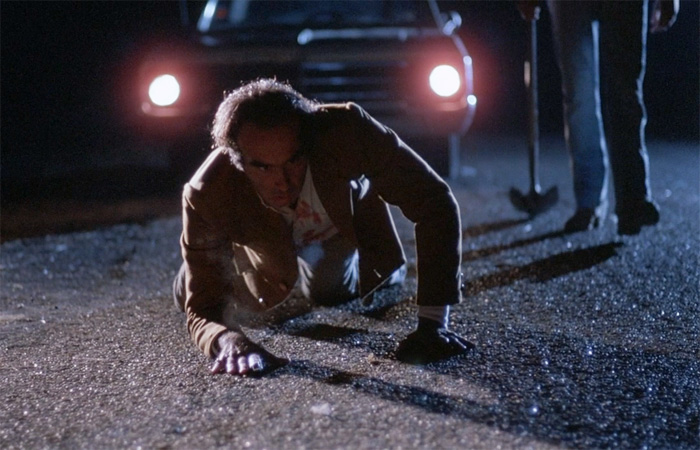
“I put my glass on the table, sat down facing it, and complained:
This damned burg’s getting me. If I don’t get away soon I’ll be going blood simple like the natives… I’ve arranged a killing or two in my time, when they were necessary. But this is the first time I’ve ever got the fever. It’s this damned burg. You can’t go straight here. I got myself tangled at the beginning. When old Elihu ran out on me there was nothing I could do but try to set the boys against each other. I had to swing the job the best way I could. How could I help it if the best way was bound to lead to a lot of killing?… It’s this damned town. Poisonville is right. It’s poisoned me… this getting a rear out of planning deaths is not natural to me. It’s what this place has done to me… I’m going blood simple.”
– Dashiell Hammett in Red Harvest (1929)
Considered one of the best directorial debuts in modern filmmaking, “Blood Simple.” is a bold act by the Coen brothers, in which resides much of the essence and characteristics of their later works.
“Blood Simple.” takes place in Texas. Its opening narration sets the mood of the film:
“The world is full o’ complainers. An’ the fact is, nothin’ comes with a guarantee. Now I don’t care if you’re the pope of Rome, President of the United States or Man of the Year; somethin’ can all go wrong. Now go on ahead, y’know, complain, tell your problems to your neighbour, ask for help, n’ watch him fly. Now, in Russia, they got it mapped out so that everyone pulls for everyone else… that’s the theory, anyway. But what I know about is Texas, an’ down here… you’re on your own.”
The film revolves around a love triangle between a bar owner named Julian Marty (Dan Hedaya), his young wife Abby (Frances McDormand), and her lover Ray (John Getz), who also happens to be a bartender at Marty’s bar.
Upon hiring private eye Loren Visser (perhaps another homage to Hammett), Julian is confronted with solid proof of his wife’s infidelity. Bewilderment becomes growing angst and upon failing in doing something by his own means, Julian decides to hire Loren once again, only this time the beat is different – $10,000. He wants them dead.
Only Julian is too naïve to realise that Loren is a man of his word, and like the man says in the film’s beginning: in Texas, you’re on your own. And perhaps guided by this thought, Loren seizes the opportunity and double-crosses his client, murdering him instead with his wife’s gun while keeping the $10,000.
(If you haven’t watched the film yet, it’s time stop reading because the details that follow next lead to a logical unhappy ending.)
What Loren doesn’t foresee, because that’s the beauty of the nonexistent perfect crime, is that when Marty is found dead by Ray (who had come to the bar in hope of getting his last paycheck), the lover assumes by seeing Abby’s gun that she was the one responsible for the killing, and he commits himself to finishing off the whole business (the disposal of the body). In addition to that, Loren soon realises that he has left two objects that might incriminate him in the office where he killed Marty…
Adding nothing more to the already complicated plot, let’s just dive into the reasons why “Blood Simple” is, aside from a landmark in the Coen brothers filmography, one of their best films.
1. Noir Aesthetic
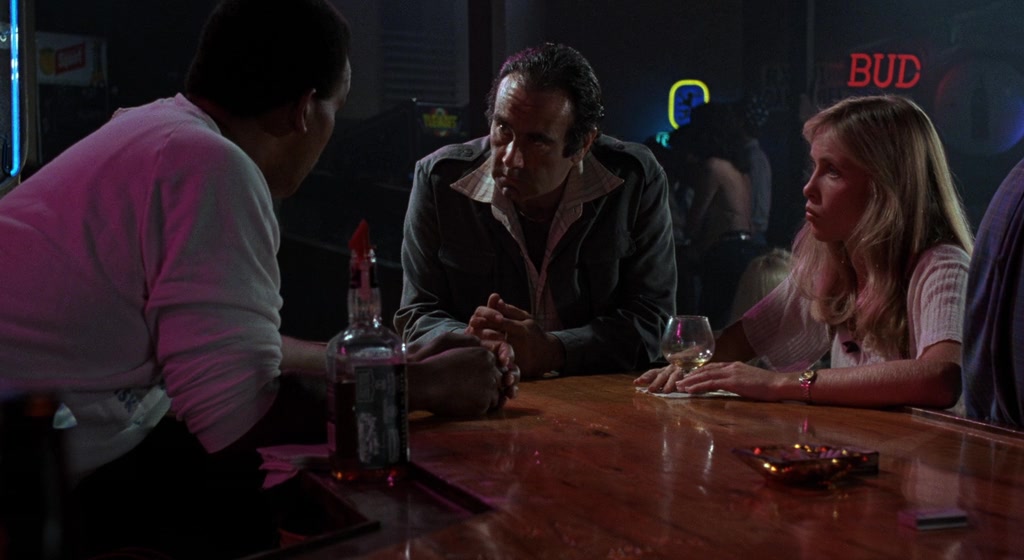
Much of the interest in “Blood Simple” resides precisely on the film’s visual uniqueness. Now, what the directors did was follow the good old patterns of noir classics – creating textures and different layers on the images of spaces and people by cleverly articulating the light around them, therefore experimenting with the contrast between light and dark.
Thus, providing the audience with a more thrilling atmosphere where people are not seen; instead we see their silhouettes moving around, which increases the proximity between audience and film, because we too are waiting in the darkness for things to unfold, for people to come forward, for the right moment to strike the perpetrator.
On the other hand, the Coen brothers recur to bold and distinctive camera angles, assuming otherwise unnatural points of view over the action taking place. Also noteworthy is the filmmakers’ use of lines within the frame; meaning, making a clever use of shadows, especially window shades or objects that provide a set of distinctive lines, either diagonal or straight.
If one tries to remember Ray’s house, the first images that come to mind are those of Abby and Ray in bed, or Visser breaking inside at night, situations in which everything is in the dark and the lines projected by the blinders left ajar occupy a great part of the ‘screen’.
As in the classics, the Coen brothers also chose to film the most important scenes away from broad daylight, either choosing closed spaces without sources of natural light or by simply choosing to shoot at night or at dawn/aurora. However, there is one thing that majority of the classics didn’t use and the filmmakers use in “Blood Simple” which also works as a plus. These are tracking shots.
In the Noir Golden Age (the end of 1930s to the 1940s and 1950s), cameras were heavy and most filmmakers then chose to increase tension by a fast pace crosscutting or by increasing the soundtrack’s presence. And it wouldn’t make much sense in a film where everything is so secretive to suddenly increase the soundtrack as a crucial moment approaches, so tracking shots were used to achieve this effect.
In various moments of “Blood Simple”, the tracking shots help to increase our heartbeats; for instance, when Abby walks around Ray’s apartment at night and we know that danger awaits her, or right at the film’s end, when Abby, who’s holding the gun, waits for the killer to come across the door so she can shoot him. These can appear to be simple details, however, it’s precisely these little details that help to recognise the value within such a low-budget film.
2. Noir Motifs and Themes
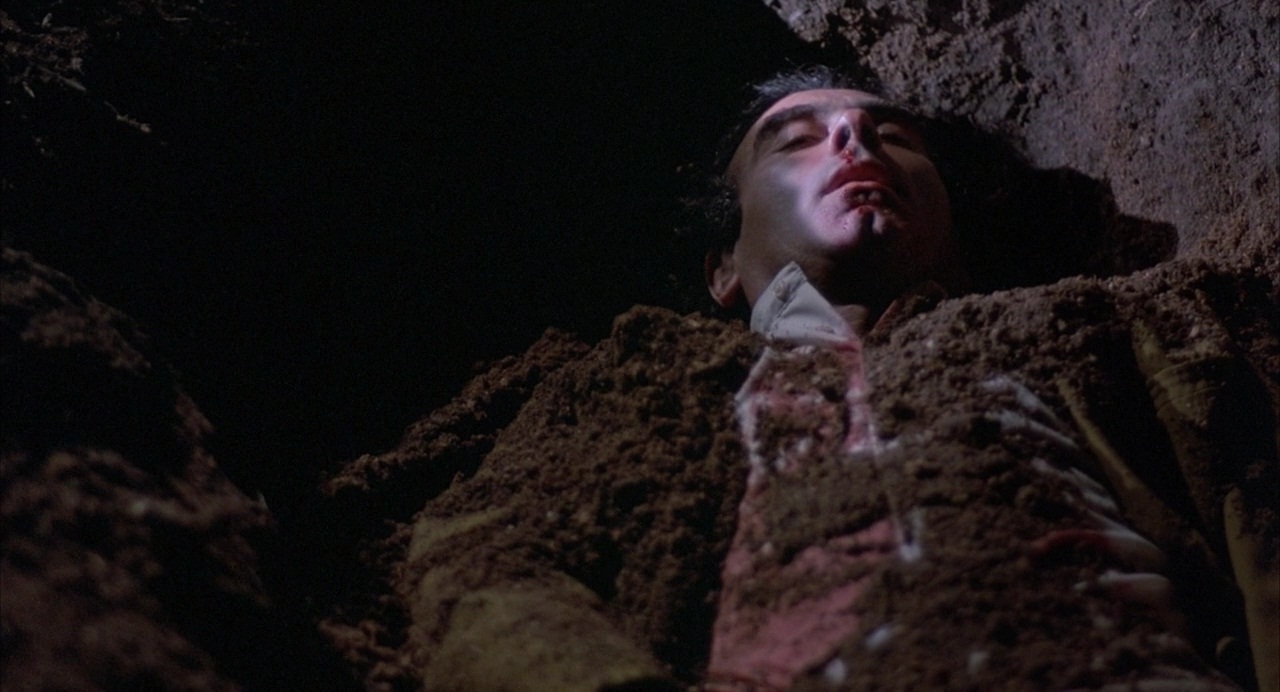
There are a couple of noir motifs present in “Blood Simple”, otherwise it wouldn’t really be considered a neo-noir film. These include the setting, the cynicism, the characters’ disposition toward violent resolutions and the use of violence itself, eroticism (scenes between Abby and Ray), betrayal, and the seemingly non-existent communication between parties.
So, about the first: setting. There is much to be set, but Visser’s first voiceover explains it all: “In Texas, you’re on your own.” In addition to this, the film’s own locations give reason for this voiceover. Marty, the ‘employer’ and the man responsible for the planning of a first wave of violence, owns a sort of night club which is a quite frequent location of noir films.
However, one can also speculate that Marty’s apparent financial comfort can come from other sources, namely illegal ones, since he can afford to pay such large sums of money to Visser. And the fact that he knows and hires such an odd man to work for him is strange in itself.
Visser himself embodies two other noir elements: cynicism and betrayal. Nothing to add to that. However, the most fascinating aspect is perhaps the lack of communication between parties and secrecy of the all plot. Abby is involved with Ray, in secret of course; Marty hires Visser to kill the two lovers, once more in secret; and Ray misunderstands the situation, thinking that Abby murdered Marty, therefore choosing to finish the task and dispose of the body. Visser plots to murder the two only remaining victims of his scheme.
3. More on visuals: Angles. Movement. Use of Colour. Light and Dark
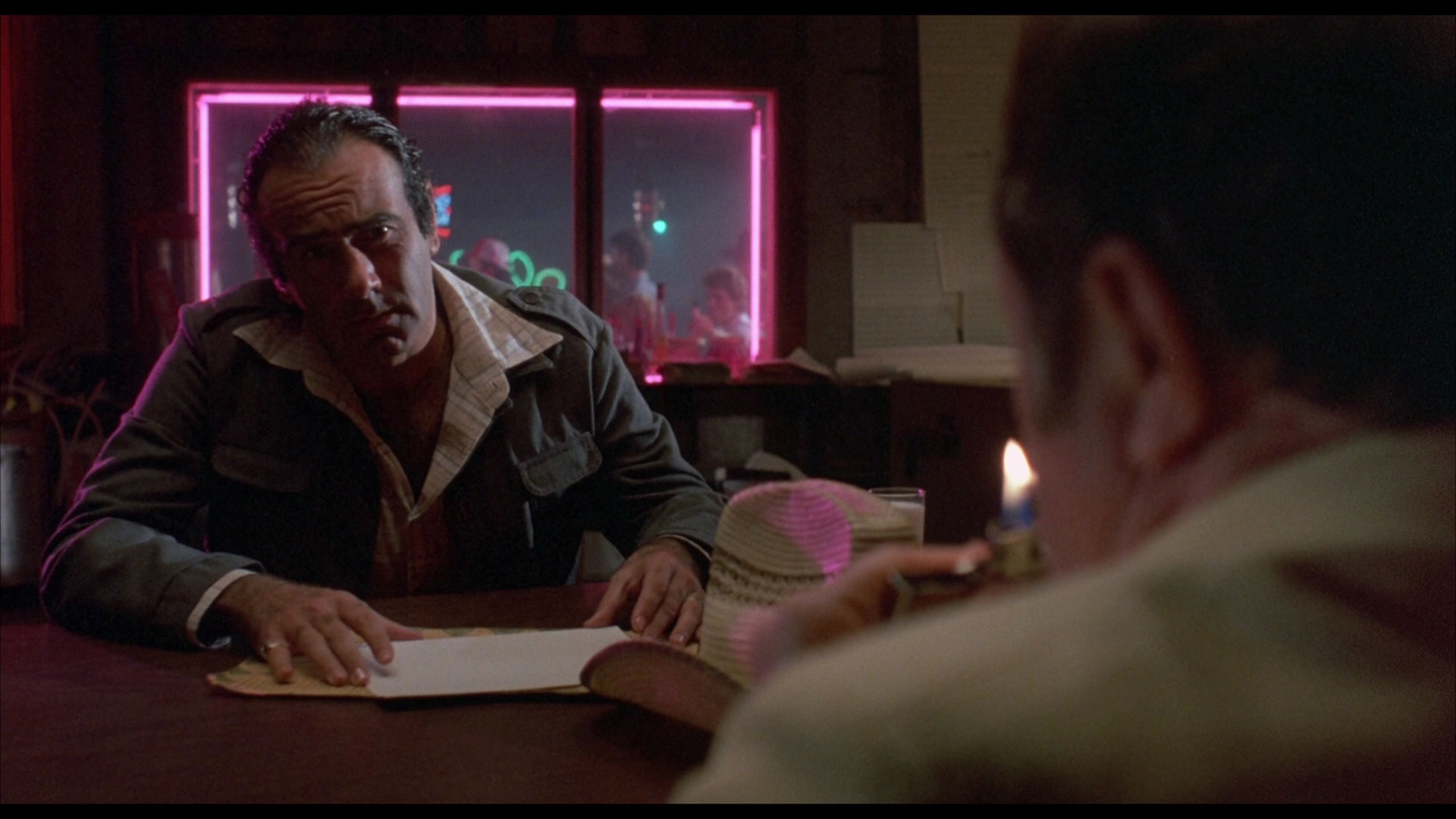
Even though the first reason is focused on visuals, and truth be said, much of the film’s richness comes from that specific field, in this second topic some other aspects not necessarily dubbed noir are highlighted as details from which the film benefited.
So, with that being put into words, we move forward into the first aspect: angles. And regarding those, not only do they work greatly in the film, but they also set the bar in terms of the film’s tone. “Blood Simple” can be perceived as a sort of noirish parody of life, meaning the film is quite serious in the manner of violence and human corruption.
However, it is quite effective as a sort of dark comedy because in being set in small town in the heart of Texas, it exploits and exaggerates in the portrayal of the parties in a lousy-planned local killing. When you come to think of it – a jealous husband or wife who goes away for the weekend, and suddenly in that same period, their spouse is found dead (which was the first intent in the plot)? How many times have we heard of crimes of passion?
It really is a small-time event happening in a small town repeated God knows how many times already. And some of the camera angles adopted in this film are sort of echoes of this idea, commenting on the irony of the situation (particularly the frequent low angles and great close-ups). An example of this is, for instance, the shot in which Loren lays dying in the bathroom. But the film really is rich in these little details that sort of comment on the pathetic side of the tragedy.
The same thing happens with the use of light and dark, which is used in manners similar to many classic noir films, but also is interestingly used in some situations. And an example of this also happens in the situation described earlier, where Loren lays among the shiny tiles in the lighted bathroom, dying; whereas, Abby lays in the adjacent room in almost total darkness, safe and secure.
Regarding movement, it’s true that this film lives and thrives in its establishing shots, but there are moments where the camera moves as if a narrator commenting on the scene and on the feelings of the characters. For instance, take the moment after Marty’s failed attack on Abby where the camera suddenly rushes from the car’s point of view toward the couple of lovers standing over the lawn.
The use of colour is another interesting aspect. Not only does it provide the audience with useful information on the character’s mood and interiority something that late classic noirs did – such as “Leave her to Heaven” (1945) – it also helps set the mood and tone of the setting and film. Examples of these ideas are the constant use of neon lights, and the patterns and colours of the shirts, ties and suits used by Julian Mary and private eye Loren Visser.
4. Film Structure: The Perfect Nightmare
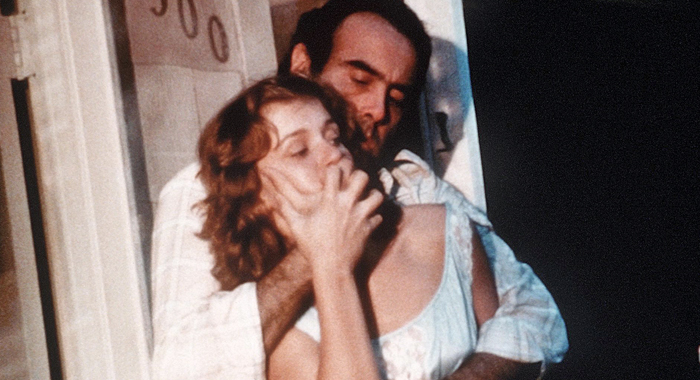
This film marked the beginning of the careers of the Coen brothers, so naturally much of what later became known as the qualities and characteristics of their work are present in this film, especially regarding the tone, the use of tragic elements, and themes, such as the fall of man and despair and the ‘bloody looks’. But there is a distinctive mark that binds almost all of the films directed by the Coen brothers, and that resides in the film structure itself – it is sharpness.
Indeed, sharpness is the focus of this third topic. Not only is it present in the writing – dialogue and plot points – but is it also present in the visual of the film itself, through the editing style. In fact, it is the ‘keeping everything to the point’ characteristic that is responsible for the film’s logic, as well as the perfect timing of events which leads to a dominant impression/sensation you have while watching the film, that of an endless nightmare.
One where people keep on cleaning blood but there’s still more to come, where characters are double-crossed or something keeps being misinterpreted, where a detail keeps getting forgotten and it is that detail that keeps the nightmare running for an hour and a half.
In support of this conclusion I’ve found a couple of words that might be of interest in the course of this reading:
“The plot is an intricate clockwork of lethally intersecting misunderstandings. The principal characters – Abby, Ray, Marty and Visser – all behave more or less rationally, but they are all working from incorrect or insufficient information. Marty doesn’t know that Abby and Ray are not dead; Abby doesn’t know that Marty is dead (and Visser doesn’t know that she doesn’t know this); and Ray doesn’t know that it wasn’t Abby who did the killing.
Especially cunning are the twinned visits to the bar by Ray and Abby on subsequent nights: He finds an attempted murder and assumes she did it; she finds an attempted burglary and assumes he did it (a nice, related touch: the repeatedly undiscovered cigarette lighter—a red herring literally hidden under fish).”
“Blood Simple” had as much of a chance of being a failure as it had of being a success. And that is due to the thin lines that divide the tragic-comic from non-funny event, the irony from failed mockery. And the film never crosses over to the wrong side. In fact, characters keep finding themselves in ridiculously tragic situations, but we as an audience do not laugh at them – we believe in them and that is due to the filmmaker’s sharpness when it comes to the film structure.
It is never dull but rather logical, and the film obeys the classic relationship of cause-consequence while keeping our eyes entertained, either by the great performances from the actors, either by the small yet rich details of the camera angles and colours, or by a great consistent editing rhythm that manages to simultaneously work in suspense and exaggeration.
5. Performances
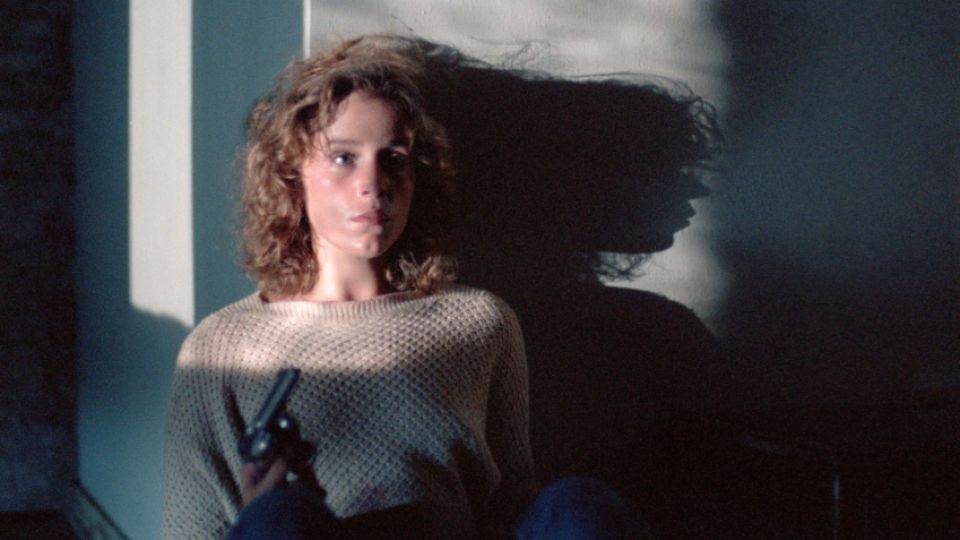
It is a fact that “Blood Simple” was made with very limited resources, and when that happens it usually helps – to increase the film’s value – to have strong visuals and great performances. And “Blood Simple” is the perfect example of this because those two little ‘details’ are maybe 60 percent of the film’s value.
This was Frances McDormand’s first appearance in a feature film and although she gives a very solid performance, in my opinion, the central performances in the film were by Dan Hedaya (Julian Marty) and specially M. Emmet Walsh (detective Loren Visser). If you think about it, the best scenes in the film happen when these two are together – the scene in Loren’s car, and the two scenes in Marty’s office.
It’s a joy to watch these scenes because they are very rich from an acting viewpoint, because by watching it, one can notice that the two actors really embrace their characters either by little mannerisms, or by the way they cleverly use of their gaze and voices. Can one forget Visser’s voice and laugh? They’re memorable.